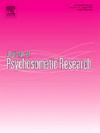Who benefits the most from cognitive behavior therapy for health anxiety? Secondary analysis of a randomized controlled trial of internet-delivered vs. face-to-face treatment in primary care
IF 3.5
2区 医学
Q2 PSYCHIATRY
引用次数: 0
Abstract
Objective
To evaluate who benefits most from exposure-focused cognitive behavior therapy (CBT) for pathological health anxiety.
Methods
This was a secondary study based on a randomized controlled trial of Internet-delivered versus face-to-face CBT (N = 204) delivered in primary care for participants with pathological health anxiety and a primary diagnosis of either somatic symptom disorder or illness anxiety disorder. Linear mixed effects regression models were fitted on 13 weekly 18-item Health Anxiety Inventory assessments over the treatment phase. The time×variable coefficient was tested as indicative of a predictive effect, regardless of treatment format. The treatment format (Internet versus face-to-face) was then added to the model, and the time×format×variable coefficient was tested as indicative of moderation of the between-format effect. The following pre-treatment variables were evaluated: age, gender, education, health anxiety, subtypes of health anxiety behaviors, anxiety sensitivity, intolerance of uncertainty, depression symptoms, experience of psychotherapy, noncommunicable disease, treatment preference, and path of referral.
Results
Regardless of delivery format, a larger reduction in health anxiety was predicted by higher pre-treatment health anxiety, bodily preoccupation/checking, prevention/planning, anxiety sensitivity, and depression symptoms. Most effects were small. None of the candidate variables were significant moderators of the relative effect of Internet-delivered and face-to-face CBT.
Conclusion
This study replicates that higher pre-treatment health anxiety and anxiety sensitivity are predictive of a larger reduction in health anxiety regardless of CBT format. So far, no robust moderators of the relative effect of Internet-delivered versus face-to-face CBT for health anxiety have been identified.
谁从健康焦虑的认知行为疗法中获益最多?初级保健中网络治疗与面对面治疗的随机对照试验的二次分析
目的评价暴露导向认知行为疗法(CBT)治疗病理性健康焦虑的最大受益人群。方法:这是一项基于网络提供与面对面CBT (N = 204)的随机对照试验的二级研究,在初级保健中为病理性健康焦虑和初步诊断为躯体症状障碍或疾病焦虑障碍的参与者提供CBT。对治疗期13周18项健康焦虑量表评估进行线性混合效应回归模型拟合。无论治疗形式如何,均检测time×variable系数作为预测效果的指示性指标。然后将治疗格式(互联网与面对面)添加到模型中,并测试time×format×variable系数作为指示格式间效应的适度性。评估以下治疗前变量:年龄、性别、受教育程度、健康焦虑、健康焦虑行为亚型、焦虑敏感性、对不确定性的不耐受、抑郁症状、心理治疗经历、非传染性疾病、治疗偏好和转诊途径。结果无论何种分娩方式,较高的治疗前健康焦虑、身体关注/检查、预防/计划、焦虑敏感性和抑郁症状均可显著降低健康焦虑。大多数影响都很小。没有一个候选变量是网络传递和面对面CBT相对效果的显著调节因子。结论无论CBT形式如何,较高的治疗前健康焦虑和焦虑敏感性预示着更大的健康焦虑减少。到目前为止,还没有发现互联网与面对面认知行为疗法对健康焦虑的相对影响的有力调节因素。
本文章由计算机程序翻译,如有差异,请以英文原文为准。
求助全文
约1分钟内获得全文
求助全文
来源期刊
CiteScore
7.40
自引率
6.40%
发文量
314
审稿时长
6.2 weeks
期刊介绍:
The Journal of Psychosomatic Research is a multidisciplinary research journal covering all aspects of the relationships between psychology and medicine. The scope is broad and ranges from basic human biological and psychological research to evaluations of treatment and services. Papers will normally be concerned with illness or patients rather than studies of healthy populations. Studies concerning special populations, such as the elderly and children and adolescents, are welcome. In addition to peer-reviewed original papers, the journal publishes editorials, reviews, and other papers related to the journal''s aims.

 求助内容:
求助内容: 应助结果提醒方式:
应助结果提醒方式:


